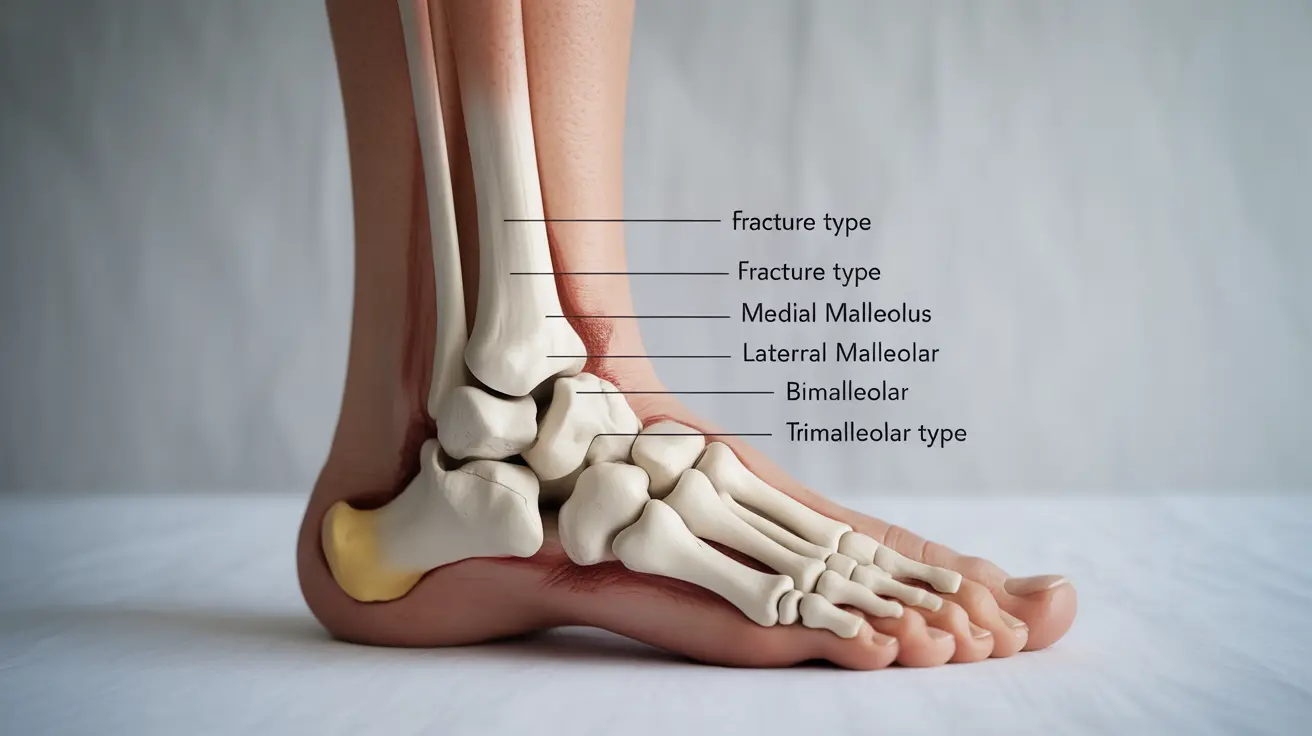A broken ankle, also known as an ankle fracture, is a serious injury that can significantly impact your mobility and quality of life. Understanding the signs, treatment options, and recovery process is crucial for anyone who experiences or suspects this injury. This comprehensive guide will walk you through everything you need to know about ankle fractures and their management.
Understanding Ankle Fracture Types and Severity
Ankle fractures can range from simple breaks in a single bone to complex fractures involving multiple bones. The ankle joint consists of three main bones: the tibia (shinbone), fibula (smaller leg bone), and talus (ankle bone). A break can occur in any of these bones, and the severity will determine the treatment approach.
Common Types of Ankle Fractures
Medical professionals typically classify ankle fractures based on their location and complexity:
- Lateral malleolus fracture (outer ankle bone)
- Medial malleolus fracture (inner ankle bone)
- Bimalleolar fracture (involving both malleoli)
- Trimalleolar fracture (affecting three ankle areas)
Signs and Symptoms of a Broken Ankle
Recognizing the symptoms of a broken ankle is crucial for seeking appropriate medical attention. Common indicators include:
- Immediate, severe pain
- Significant swelling and bruising
- Difficulty or inability to bear weight
- Visible deformity or misalignment
- Tenderness to touch
- Reduced range of motion
Treatment Approaches for Ankle Fractures
Treatment for a broken ankle depends on several factors, including fracture type, severity, and patient health status. Medical professionals may recommend either conservative or surgical treatment options.
Conservative Treatment
Non-surgical treatment may be appropriate for stable fractures and typically involves:
- Immobilization with a cast or boot
- Regular monitoring and X-rays
- Gradual weight-bearing progression
- Physical therapy
Surgical Intervention
Surgery might be necessary for:
- Unstable fractures
- Displaced bone fragments
- Open fractures
- Fractures involving multiple bones
Recovery and Rehabilitation Process
Recovery from an ankle fracture requires patience and dedication to proper rehabilitation. The healing process typically progresses through several phases:
Initial Recovery Phase
During the first few weeks, focus on:
- Following weight-bearing restrictions
- Managing pain and swelling
- Maintaining elevation
- Performing prescribed exercises
Progressive Rehabilitation
As healing progresses, rehabilitation may include:
- Graduated weight-bearing activities
- Range of motion exercises
- Strength training
- Balance and proprioception work
Prevention Strategies
While not all ankle fractures are preventable, certain measures can reduce your risk:
- Wearing appropriate footwear
- Maintaining good bone health
- Practicing proper exercise form
- Being cautious on uneven surfaces
- Strengthening ankle muscles
Frequently Asked Questions
What are the typical symptoms of a broken ankle and how do they differ from a sprain? A broken ankle typically causes immediate, severe pain, significant swelling, and often an inability to bear weight. Unlike sprains, fractures may present with visible deformity, audible cracking sounds during injury, and more intense, localized pain.
How is a broken ankle usually treated, and what are the options for surgery versus nonsurgical methods? Treatment depends on the fracture's severity. Stable fractures may heal with immobilization in a cast or boot, while unstable or complex fractures often require surgical intervention with internal fixation using plates, screws, or rods.
What are some common causes of a broken ankle, and how can you prevent it from happening? Common causes include sports injuries, falls, car accidents, and twisting injuries. Prevention involves wearing proper footwear, maintaining bone health through diet and exercise, and being cautious on uneven surfaces.
What is the average recovery time for a broken ankle, and when can you start putting weight on it? Recovery typically takes 6-12 weeks for bone healing, with full rehabilitation lasting 3-6 months. Weight-bearing usually begins gradually after 6-8 weeks, depending on the fracture type and healing progress.
What are the long-term risks and potential complications if a broken ankle is not properly treated or healed? Untreated or improperly healed ankle fractures can lead to chronic pain, arthritis, permanent deformity, limited mobility, and increased risk of future injuries. Proper treatment and rehabilitation are essential for optimal outcomes.




